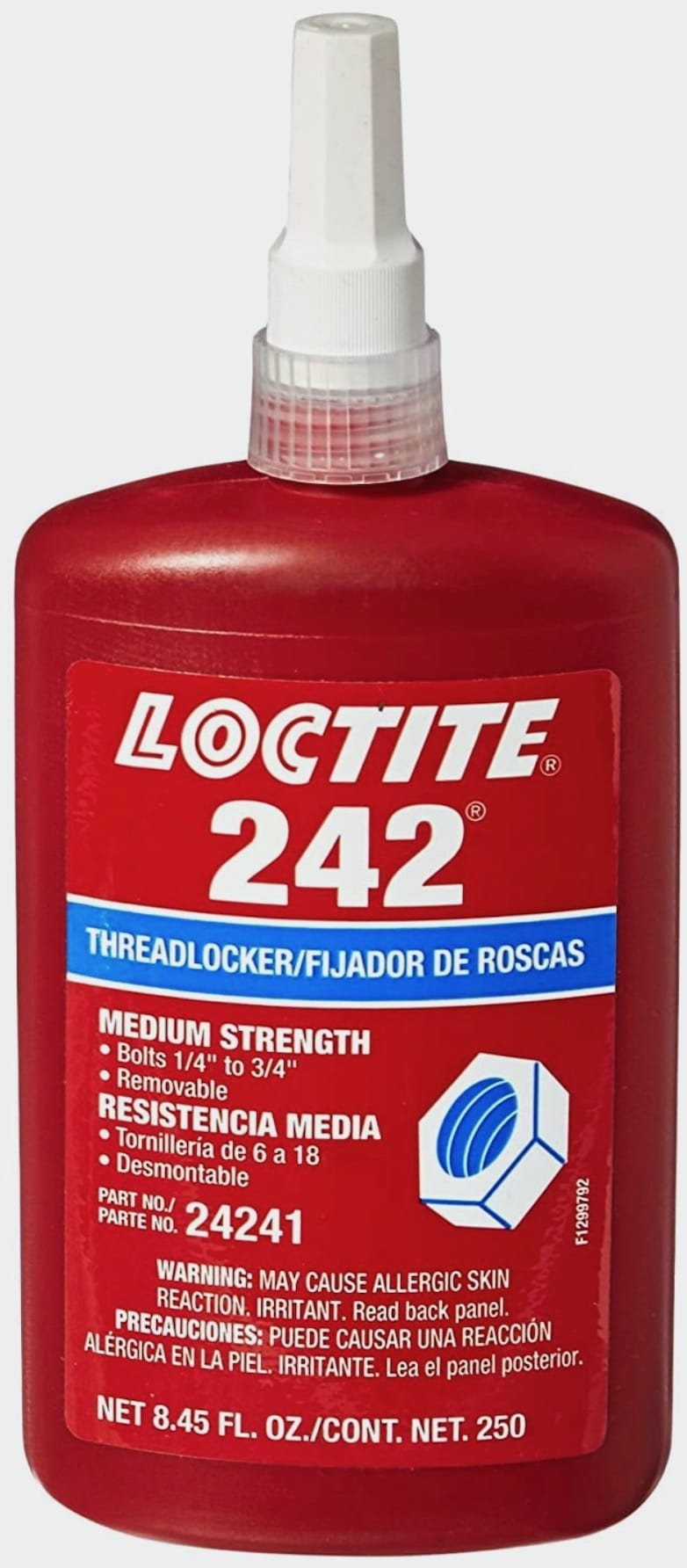ASK THE MXPERTS: IMPORTANT RULES ABOUT USING LOCTITE
Dear MXA,
I put Loctite on all the bolts on my bike, but many of them come loose after a few rides. What am I doing wrong?
First, stop putting Loctite (or any other threadlock product) on every bolt on your bike. That is a recipe for disaster. Not every bolt needs to have its hatches battened down. Avoid using threadlock on frequently removed small nuts and bolts, especially on light-duty bolts, such as those used to hold on side panels. Loctite should never be used on radiator shroud bolts. Why not? The radiator shroud bolts thread into nuts that are embedded into the plastic gas tank. If the Loctite seizes the bolts in place, the nut will spin inside the plastic gas tank if you use too much force. Once the nut spins loose from its plastic cavity, it will be a problem forever.
You must remove residue from a bolt before applying Loctite, especially on bolts that were previously Loctited. Old Loctite under new Loctite will give a false torque reading, which will make that bolt come loose. You need to clean the threads every time the bolt is removed. While it’s possible to remove the old threadlock, there isn’t always enough time between motos. That’s why it’s better not to use threadlock; instead, use assembly lube and the proper torque specs—at regular intervals.
You didn’t mention what type of Loctite you were using, but it makes a big difference. Loctite offers 16 different types of blue, red and green threadlock. They are for different temperatures, breakaway torques or uses—as well as removable, permanent or wicking applications. On bolts that you will be removing with standard tools, use blue Loctite. Red Loctite is for permanent applications. Red Loctite requires more torque to overcome the threadlock hold (breakaway torque). If the red Loctite won’t come loose, heat can be applied to help loosen its hold. Loctite also offers wicking threadlocks that can be applied to already tightened, exposed threads.
The two most popular threadlocks are Blue Loctite 242 and Red Loctite 262. The Red 262 threadlock has a breakaway torque of 168 in/lb and is recommended for 10mm to 25mm bolts. Once applied, it allows five minutes of work time before it sets up. It is best to apply a little heat, where possible, to ease removal. Blue 242 has a 10-minute work time and a breakaway torque of 115 in/lb. It’s designed for 6mm to 19mm bolts. It should be noted that they all require 24 hours for a full cure. That makes them mostly ineffective as a between-moto treatment.
Be forewarned that exhaust pipe fittings do not like threadlock. Four-stroke head pipes can exceed 500 degrees Fahrenheit. That is hot enough to liquefy most common threadlock compounds.
As a rule of thumb, try not to use threadlock; instead, rely on the proper torque specs from your owner’s manual. If you must use threadlock, use the appropriate grade of a removable type. That means either Loctite 220 (on 4mm and smaller threads) or 242 (on 5mm to 19mm threads). Only use a permanent threadlock when specified by the manufacturer or on threads larger than 20mm (and only use a permanent threadlock in an area that can be heated to 300 degrees or higher). Loctite can’t fix a worn-out bolt. You should replace all bolts and nuts that have sloppy threads. For a proper hold, a bolt needs three complete revolutions of threads to be filled with the fluid. Two drops of threadlock is usually enough on 6mm and 8mm threads. More can be used, but it doesn’t necessarily result in more holding force.








Comments are closed.